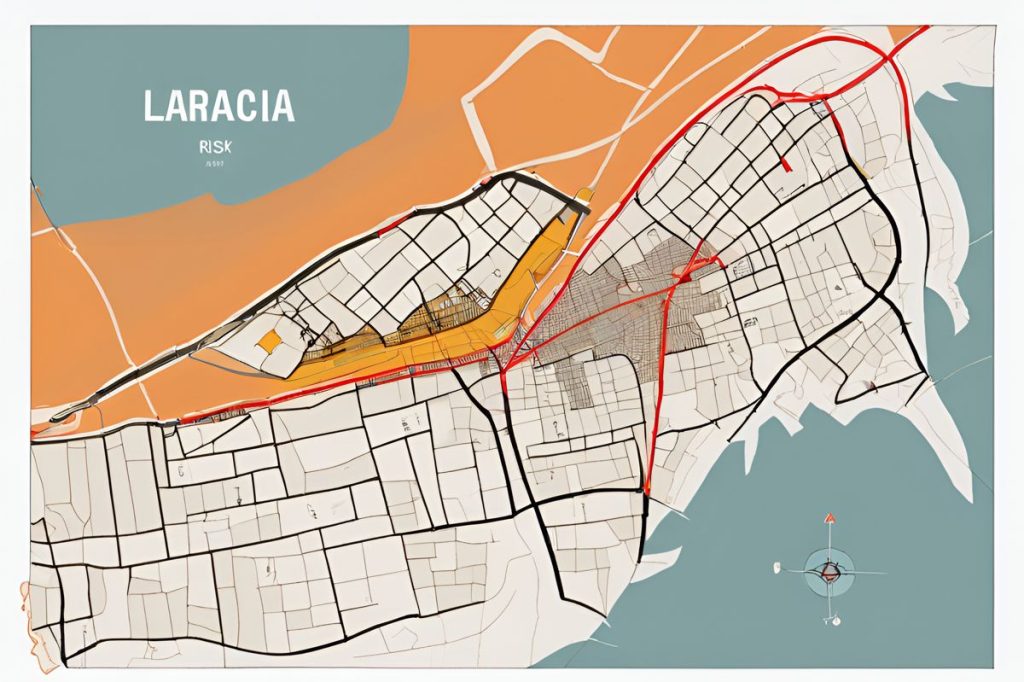Ask Wire’s fire risk analysis in Larnaca has categorized the district into four levels, with 45% deemed low risk, while high-risk areas like Odou and Melini are identified. Of the 54,102 buildings analyzed, 79% are residential, aiding in fire safety, insurance assessment, and property management.
What are the findings of the Cypriot Tech Firm’s Fire Risk Analysis in Larnaca?
The Cypriot firm Ask Wire categorized Larnaca district into four fire risk levels, with 45% low risk. High-risk zones are mostly in the west, affecting villages like Odou and Melini. Of 54,102 buildings analyzed, 79% are residential, predominantly in low-risk areas. The data aids in fire safety, insurance assessment, and property management.
Introduction to Fire Risk Assessment
In a groundbreaking initiative, a Cypriot company specializing in analytics has taken a significant step towards enhancing fire safety. Ask Wire, on a mission to meld technology with practical solutions, presented a detailed assessment of fire hazards in the Larnaca district. This area spans over 1,120 square kilometers and is now parsed into identifiable fire risk zones, thanks to the firm’s comprehensive analysis.
The assessment was meticulous, categorizing the district’s vast expanse into four distinct risk levels. Each level reflects the degree of fire susceptibility, with a surprising 45% of the territory deemed low risk. Such detailed categorization is pivotal for strategic planning and resource allocation, particularly in areas prone to wildfires.
Geographic Distribution of Risk
High and very high-risk zones were identified predominantly in the western part of Larnaca, an area known for its elevated terrains and dense forests. These regions include the villages of Odou, Agioi Vavatsinias, Melini, and Vavatsinia. In the tragic fires of 2021, these communities suffered greatly, facing loss of life, property, and environmental devastation. The fires underscored the urgent need for such an assessment to mitigate future risks.
In stark contrast, the southern parts of the district boast a low fire risk, encompassing the bustling Larnaca Airport and the urban sprawl of the city itself. The positioning of these areas offers a respite from the immediate dangers of wildfires, a factor that could influence future urban development and emergency planning.
Building Analysis within Fire Risk Zones
Ask Wire’s detailed report also sheds light on the district’s structural landscape. With 54,102 buildings assessed, a majority lies within the low-risk zones, providing a semblance of relief to occupants and property owners. Interestingly, 79% of these structures are residential, with most being one or two storeys in height. The prevalence of such buildings could offer tangible benefits in fire situations, potentially facilitating quicker evacuations and providing firefighters easier access to manage and contain blazes.
Despite the apparent safety, the company stresses the importance of not becoming complacent. Even in low-risk zones, no building is entirely immune to fire hazards. The report serves as a reminder of the need for continuous vigilance and adherence to safety protocols to protect lives and property.
Impact on Insurance and Property Management
Pavlos Loizou, CEO of Ask Wire, emphasized the significance of their findings, stressing the importance of prevention and proactive measures. Detailed data like this serves as a crucial tool for insurance companies, equipping them with invaluable insights. These insights are essential for assessing the resilience of buildings, calculating potential damages, and formulating risk mitigation strategies.
Moreover, as industries strive to comply with ever-tightening regulations, accurate risk data become indispensable. Such precision allows for the fair pricing of insurance premiums and ensures companies meet regulatory standards. The thorough analysis by Ask Wire thus stands to influence not only fire safety measures but also the broader framework governing insurance and property management.
What are the findings of the Cypriot Tech Firm’s Fire Risk Analysis in Larnaca?
The Cypriot firm Ask Wire categorized Larnaca district into four fire risk levels, with 45% low risk. High-risk zones are mostly in the west, affecting villages like Odou and Melini. Of 54,102 buildings analyzed, 79% are residential, predominantly in low-risk areas. The data aids in fire safety, insurance assessment, and property management.
How was the geographic distribution of fire risk zones identified in Larnaca?
High and very high-risk zones were identified predominantly in the western part of Larnaca, encompassing villages like Odou, Agioi Vavatsinias, Melini, and Vavatsinia. The southern parts, including the Larnaca Airport and urban areas, were classified as low-risk zones. These findings are crucial for urban development and emergency planning.
What insights did Ask Wire’s building analysis within fire risk zones reveal?
With 54,102 buildings analyzed, the majority were in low-risk zones, providing some relief to occupants. Interestingly, 79% of these structures are residential, which could aid in quicker evacuations and firefighting efforts. Despite the apparent safety, continuous vigilance and adherence to safety protocols are emphasized to prevent complacency.
How does the Cypriot Tech Firm’s fire risk analysis impact insurance and property management?
The detailed data from Ask Wire’s analysis is invaluable for insurance companies in assessing building resilience, calculating damages, and formulating risk mitigation strategies. It also helps in fair pricing of insurance premiums and ensuring regulatory compliance within industries. The analysis influences not only fire safety measures but also broader frameworks governing insurance and property management.

